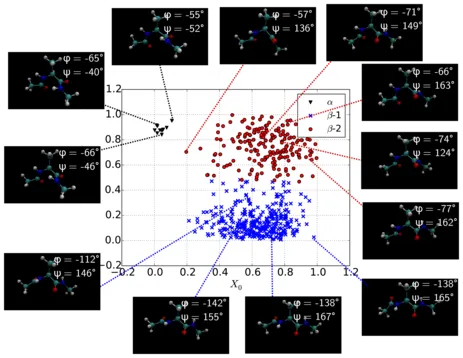Coarse-Graining in Equilibrium Statistical Mechanics
The macroscopic behavior and properties of engineering materials depend on the microscopic char- acteristics which are not accounted in typical continuum-based models. In this project we operate on the atomistic scale, and employ coarse-grained (CG) models as a computationally efficient means to study large numbers of atoms over extended spatio-temporal scales. A data-driven approach to CG has been proposed within the the multidisciplinary joint project “Predictive Materials Modeling” with the Hans Fischer Senior Fellow and TUM Ambassador, Prof. N. Zabaras (Viola D. Hank Professor of Aerospace and Mechanical Engineering, Director of the Computational Science and Engineering Laboratory, University of Notre Dame, USA). The method developed makes use of generative probabilistic models and employs a parametrized probabilistic mapping from coarse- to fine-scale descriptions which implicitly defines the coarse variables. The coarse-variable model is sequentially refined by adding features providing the largest anticipated information gain. In the context of peptide simulations, the dimension has been reduced by a factor of 30, while still capturing the main properties and revealing configurational similarities in the coarse space as depicted in Figure 3a. Predictions that reconstruct the full atomistic picture, are probabilistic and account for uncertainties due to limited fine-scale simulation data and information loss as a result of dimensionality reduction (Figure 3b).

Three clusters, corresponding to the characteristic configurational
modes (α, β − 1, β − 2), arise in the latent space.

of the radius of gyration from a common α− helix.